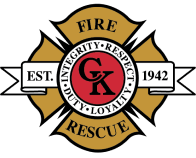Cardiac arrest is a very serious medical condition. During a cardiac arrest the heart stops beating effectively and does not efficiently pump blood to the organs of the body. The cessation of life can occur within minutes unless treatment is started.
During a cardiac arrest event, where CPR needs to be performed, the role that the public plays in the Chain of Survival is absolutely crucial, in fact it dictates the outcome of the patient. The term Chain of Survival has been around for many years and refers to five key components:
- Recognition of cardiac arrest and activation of the emergency response system.
- Cardiopulmonary resuscitation (CPR) – with an emphasis on chest compressions.
- Rapid defibrillation.
- Effective advanced life support
- Integrated post-cardiac arrest care.
The key role that the public plays in the chain of survival involves the first three steps; these steps have a direct correlation on the outcome of the patient. Chain of Survival steps can be accomplished simultaneously if more than one person is present.
Let’s review some changes to CPR in accordance to American Heart Association (AHA) that took place in 2010:
There has been a change to the Airway, Breathing, and Chest Compression (ABC) sequence. The sequence is now: Chest Compressions, Airway, and Breathing (CAB) sequence. AHA was finding that there was too long of a delay to get to chest compressions (which is extremely important to good patient outcome.)
A stronger emphasis on High-Quality CPR this means:
- Compression rate of at least 100/min.
- 30 compressions to 2 breaths in adults. If possible switch at 5 rounds.
- 15 compressions to 2 breaths in two person CPR for children (1 to Puberty).
- Chest depth of as least 2 inches in Adults.
- Chest depth of at least one third anterior-posterior diameter.
- Approximately 1.5 inches in infants.
- Approximately 2 inches in children.
- Please remember to allow complete chest recoil, MINIMIZE interruptions in compressions!
Look, listen, and feel have been REMOVED – go straight to chest compressions!
AED use: you may use an AED on an infant with adult pads – IF – no other options are available.
Avoid excessive ventilation.
Key thoughts to think about:
One agreed upon fact about CPR is certain: no amount of defibrillation will have an effective and favorable outcome if there is no perfusion to the heart and brain. We need to focus on establishing good CPR, WITH MINIMAL INTERRUPTIONS, to provide effective blood flow to the vital organs. This is the single most important factor for successful resuscitation.
Remember that you can make a difference with your actions, if you are unsure about compression ratios, do not hesitate to provide compressions only!
Resource used for reference: American Heart Association – CPR/ECC Guidelines – 2010

